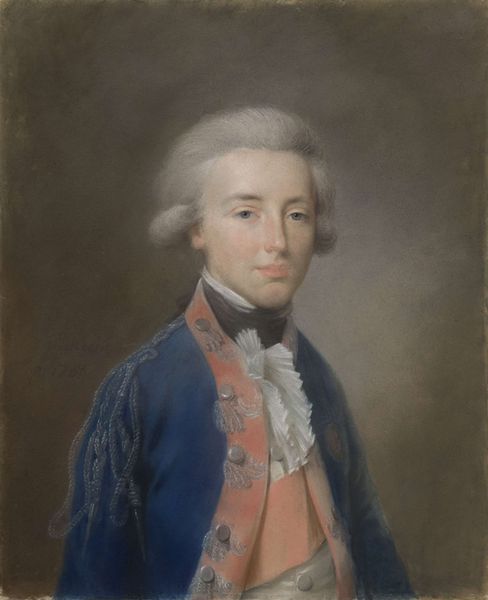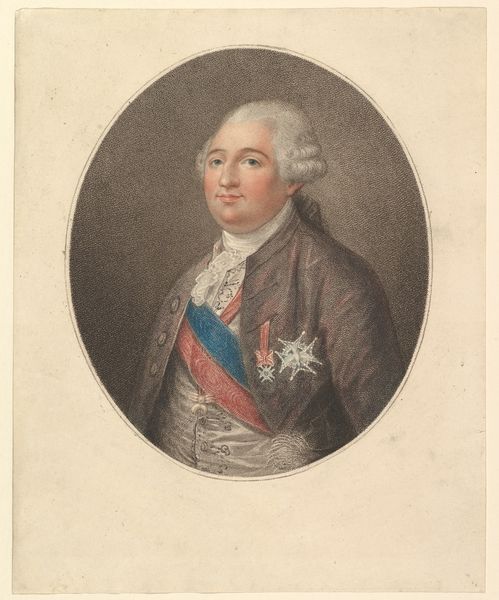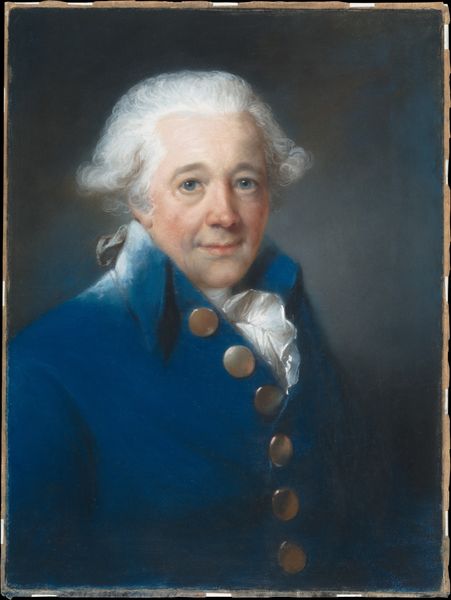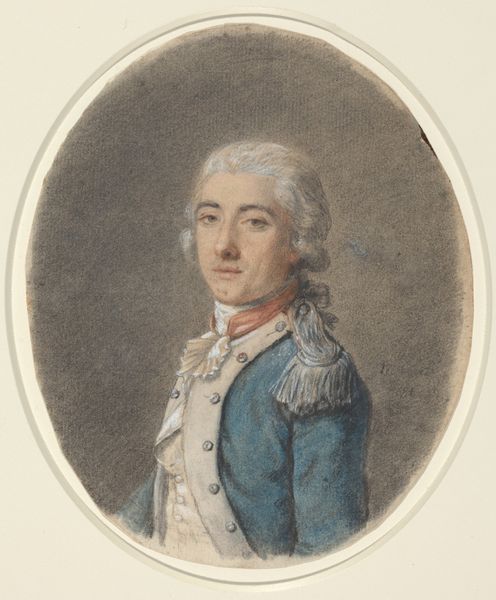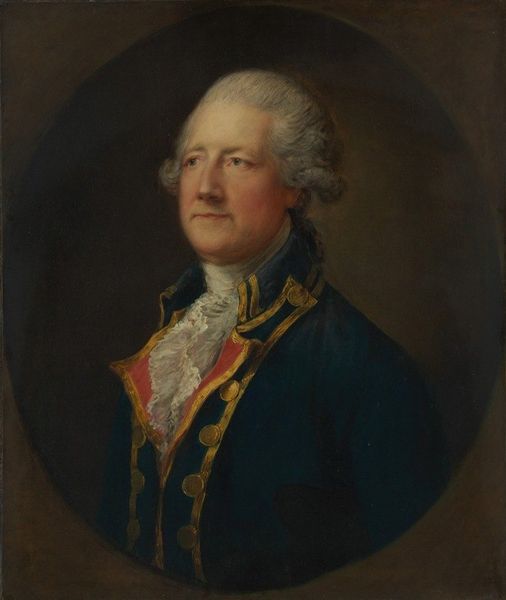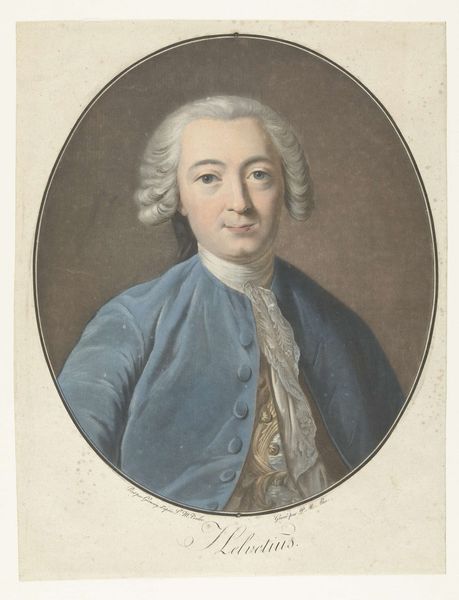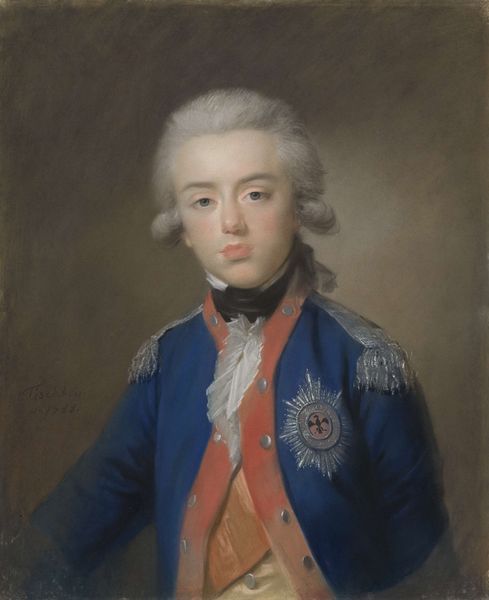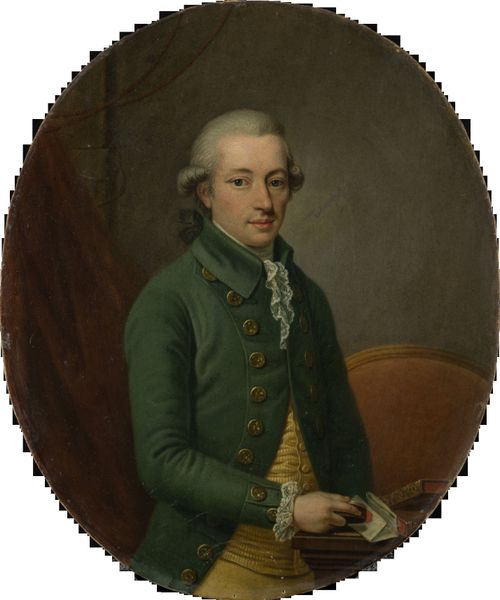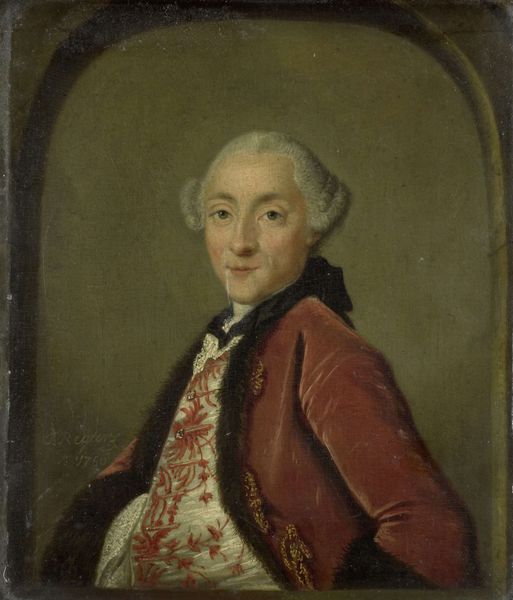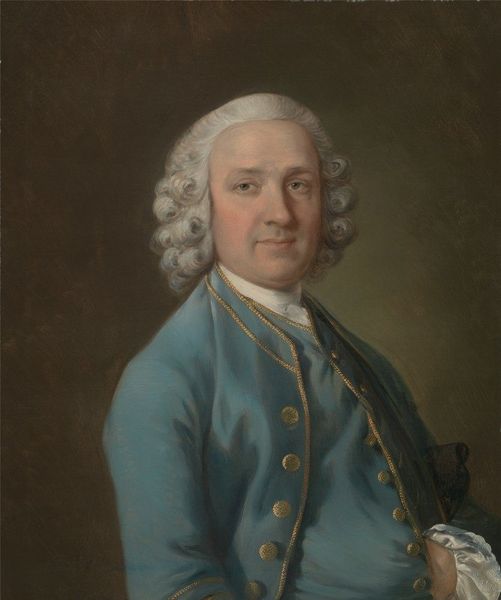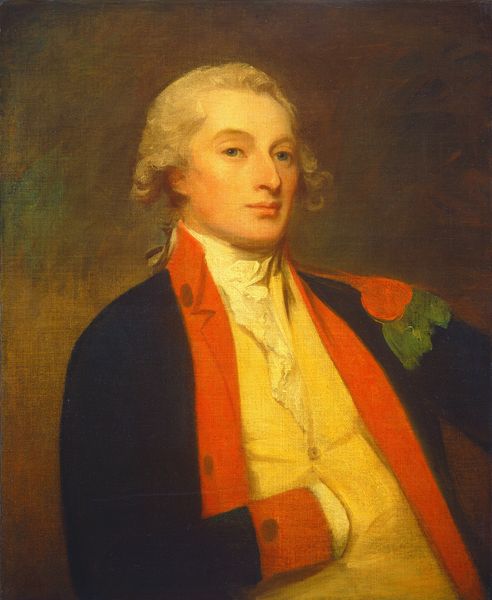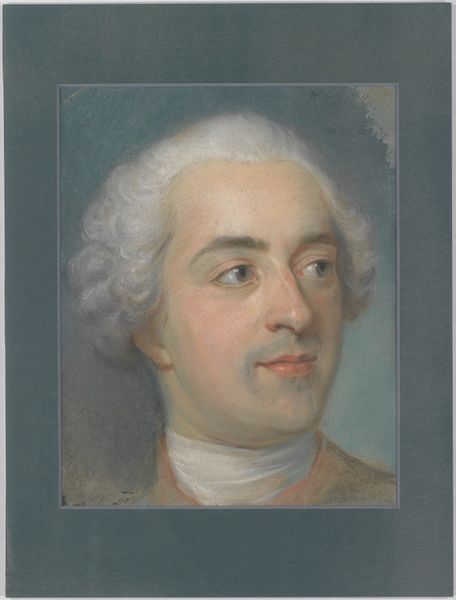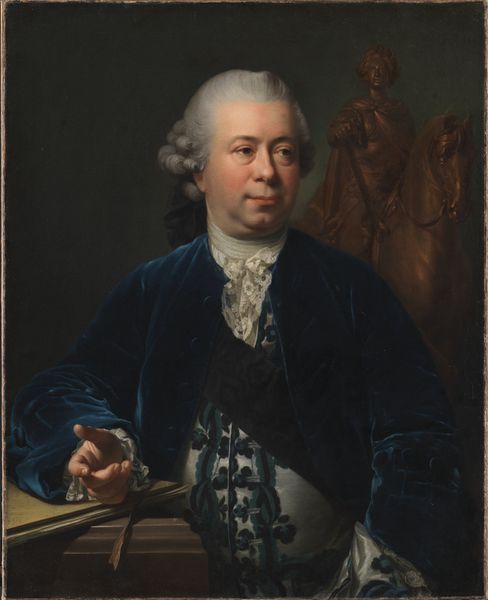
Carel Georg August (1766-1807), erfprins van Braunschweig-Wolfenbüttel. Echtgenoot van Frederica Louisa Wilhelmina (Louise), prinses van Oranje-Nassau 1785 - 1795
0:00
0:00
johannfriedrichaugusttischbein
Rijksmuseum
drawing, pastel
#
portrait
#
drawing
#
romanticism
#
pastel
Dimensions: height 62.5 cm, width 52.5 cm, weight 8.5 kg
Copyright: Rijks Museum: Open Domain
Johann Friedrich August Tischbein captured Carel Georg August, the hereditary prince of Braunschweig-Wolfenbüttel, in this pastel portrait. Made in the late 18th century, likely in the German lands, this image presents us with codes of aristocratic identity. The powdered wig, the elaborate cravat, and the expensive blue coat speak to the subject’s status and wealth. But it’s worth asking: what is the purpose of such a portrait? It might be for family, or perhaps for political display. Tischbein was from an artistic family, many of whom were court painters. These kinds of images were used to reinforce social hierarchies. By commissioning a portrait, the subject asserts his position in society and his right to rule. To truly understand this work, one must consult genealogical records, letters, and other historical documents to learn more about the social functions of art in Braunschweig-Wolfenbüttel. The meaning of art is always contingent on its context.
Comments
No comments
Be the first to comment and join the conversation on the ultimate creative platform.
